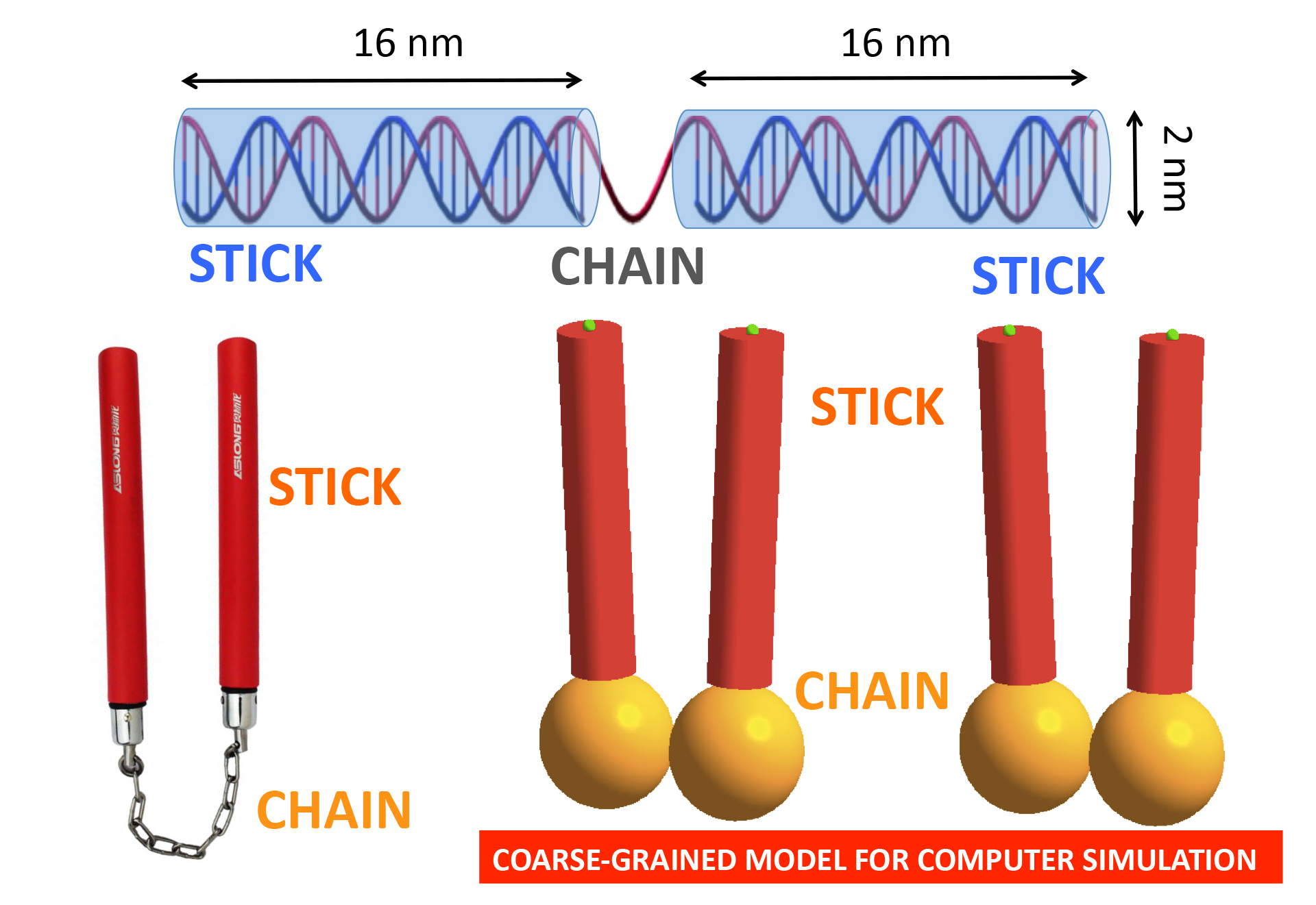Liquid crystals are highly directional fluids with physical properties halfway between that of liquids (free to move around) and crystals (highly ordered). Since their discovery in 1888 by the Austrian botanist and chemist Friedrich Reinitzer, liquid crystals went unnoticed until the 1970s, when they first came to be used for electronic displays.
Many systems exhibit liquid crystal phases, including water suspensions of short DNA duplexes. DNA, other than being the molecule of life, is also a fundamental and versatile component of modern nanotechnology for building novel innovative and biocompatible nanomaterials. Thus, a DNA-based liquid crystal could be a versatile construct. One type of DNA-based liquid crystal phase, however, had eluded researchers: the smectic phase, in which the molecules are organized into well-defined layers.
To address this gap, an international team of scientists designed three DNA sequences that self-assemble at room temperature into a nanoparticle about 50 nm long, composed of two double-stranded DNA duplexes linked together by a single-stranded DNA filament 13 nm long. The nanoparticle resembles nunchaku—a traditional weapon of several martial arts, including kung fu and ju jitsu—but 30 million times smaller.
The results of numerical simulations and experiments (including small-angle x-ray scattering studies done at ALS Beamline 7.3.3) provided unambiguous evidence that a water suspension of these synthetic DNA nano-nunchaku form smectic phases. In addition, the combined use of experiment and computer simulation afforded some insight into the physical mechanism underlying the formation of the smectic phase, which can be rooted in the folding of the DNA nano-nunchauku above a critical concentration.

Work performed at ALS Beamline 7.3.3.
M. Salamonczyk, J. Zhang, G. Portale, C. Zhu, E. Kentzinger, J.T. Gleeson, A. Jakli, C. De Michele, J.K.G. Dhont, S. Sprunt, and E. Stiakakis, “Smectic phase in suspensions of gapped DNA duplexes,” Nat. Commun. 7, 13358 (2016).